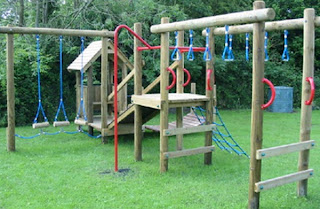Personal Reflection
I get a great opportunity to improve my technical skills in this blogging assignment. Basically, this assignment highlights how blog usage improves children’s learning. Prior to this assignment, I do not have any idea about the blog. I was a little bit worried to fulfill this assignment. Now I felt much more confident after discussing about blogs with my classmates.
It’s a great pleasure to appreciate my classmates as well as my lecturer for sharing their knowledge about the blogs in an easy understandable manner which made my life easier to start my first blog. Teachers can use blog-space to post homework assignments or communicate with parents about the developments that are taking place in the class. I learnt that the values of using technology is for children and especially parents who are working. For example, some parents do not have time to talk to the teachers when they drop their children at the centre but they can always go through emails and some of the centres do blogging. We can involve the children mainly in the usage of blogs such as verifying their homework and some class events. Children definitely show interest in posting their comments in blog rather than writing on paper. Children can experience the technology in fulfilling their daily activities in a much easier and comfortable manner.
Another advantage of blogs for children is to get into the habit of writing and improving their writing skills without mistakes. Blog sites used as online class forums enable children with various personalities, especially shy children, to participate in a discussion far more effectively. Since a blog post is exposed to the public, children can read others blogs which helps them in gaining knowledge and in improving their writing skills. As I mentioned above, a blog post is exposed to the public; I came to know some new thoughts by reading various persons’ blogs about extending children’s learning with the help of technology. I benefited from observing other students ideas of how technology plays a key role for children to improve their learning and writing skills. I got positive feedback from my classmates about my blog. Due to this feedback I felt fairly comfortable in writing my future blogs.
My group member’s feedback on my blog posts was very useful. I agree with Harpreet, She recognized that vacuum technology is good to create a familiarity between home and centre through the use of technology. Lovely also agreed that vacuum technology is an interesting and fun aspect of the curriculum where the children could learn about the processes and ways of hygienic awareness to enrich their learning, as well as language and social skills. Children using more materials for different purposes enable them to recognise that different technologies may be used in different and settings (Ministry of Education, 2004).
In response to Deep, I like the comment she assumed that It is not just I extend the children’s interest but I actually get involved with the children and make links to their home life as well. I recognize and value the non-digital technology in my practice. In reply to Karki, that it is appropriate for children to use digital cameras which I provided to respond their needs and shower them how to preview the photos and they were able to do this either by themselves or with a teacher. She suggested that I can use these photos as a helpful resource in children's future learning when they revisit and refresh their memories. As educators we should be constantly aware of the ethical surrounding the use of technology in the centre and constantly look for teachable moments in spontaneous active interaction and help children construct related knowledge (Dunkin & Hanna, 2001; Ministry of Education, 1996).
With this assignment I strongly believe that we can surely change children’s mode of learning in an easy and comfortable manner with the help of technology. As a childhood teacher, it is my responsibility to verify how far children learn by using technology. Technology allows teachers to educate the children well in an effective manner for a wide range of intelligence. We, as teachers, need to encourage children to utilise technology in an efficient way to achieve their goals. It is the responsibility of parents and teachers to create an interest for children in technology usage. Technology helps children to develop skills such as hand–eye coordination, memory, reflexes. It also encourages self-esteem, confidence and it supports independence. Technology also has potential for promoting pleasure in learning by enhancing engagement, motivation and the desire to learn.
Reference List:
Dunkin, D., & Hanna P. (2001). Thinking together: Quality adult child interactions. Wellington, New Zealand: NZCER.
Ministry of Education. (1996). Te Whāriki: He whāriki mātauranga mo nga mokopuna o Aotearoa .Wellington: Learning Media.
Ministry of Education. (2004). Kei tua o te pae assessment for learning: Early childhood exemplars.







